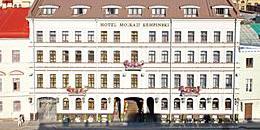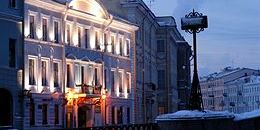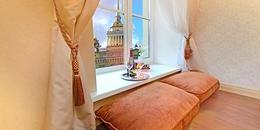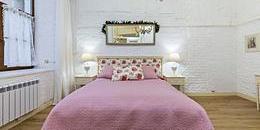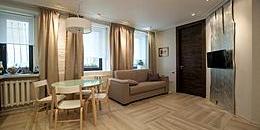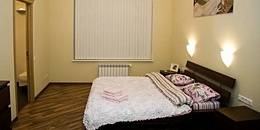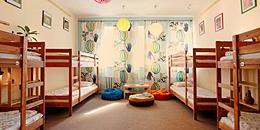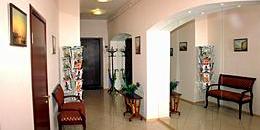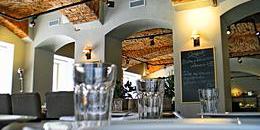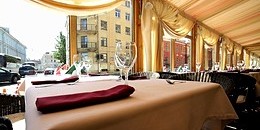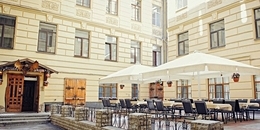Dvortsovaya Ploshchad (Palace Square)
One of the most beautiful and harmonious ensembles of architecture in the world, Palace Square remains the main public space of St. Petersburg after nearly three centuries. Like Red Square in Moscow, Palace Square in St. Petersburg has been the setting of many major events in Russian history.
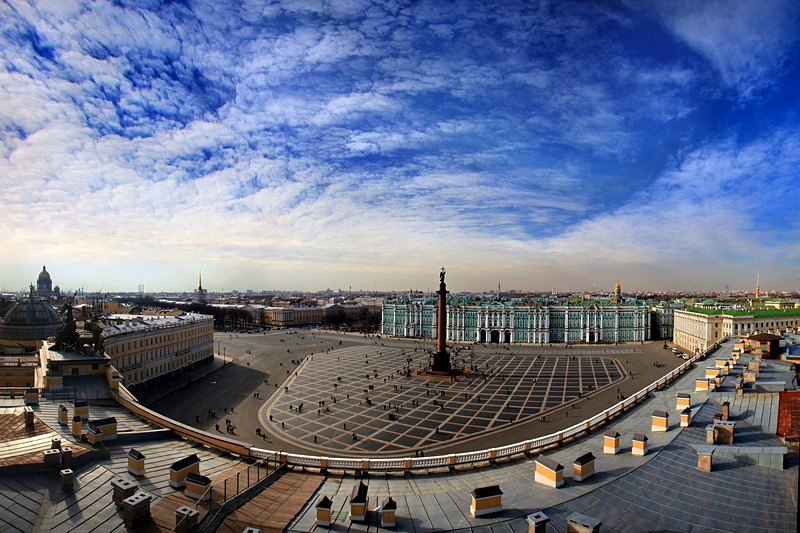
The Winter Palace was constructed on the square between 1754 and 1762 by Italian architect Francesco Bartolomeo Rastrelli. It was the first building completed on Palace Square, and it became the main residence of the Russian Emperors. Legend has it that upon its completion the area was cluttered with piles of debris, and the public could freely take anything left over. After a few hours, the entire square was cleared by the townspeople.
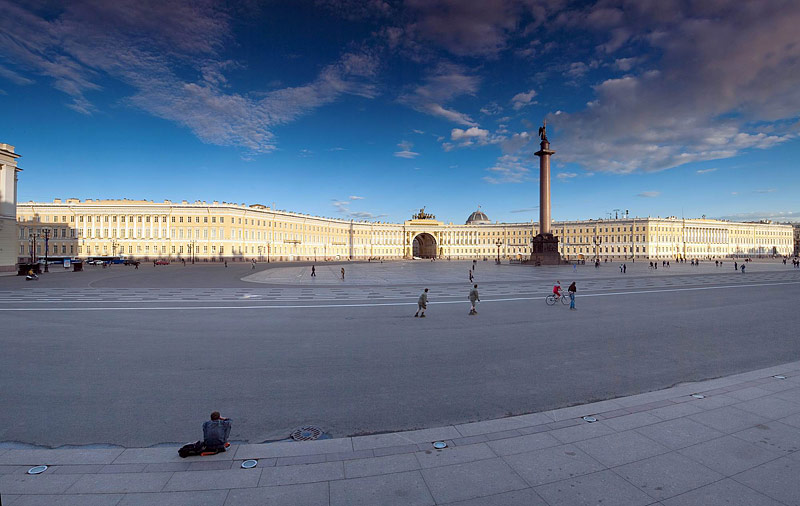
At the end of the 18th century houses were built on the southern side of the square. This greatly dismayed Catherine the Great, for she had previously admired the unencumbered space from the windows of the Winter Palace. Catherine commissioned Yury Felten to create a worthy architectural counterpoint to the Winter Palace. Although Felten's project was never realized, it formed the basis for Carlo Rossi's grand design for the magnificent General Staff Building, built between 1819 and 1829. With a 580-meter semicircular facade facing Palace Square, it has at its centre a magnificent triumphal arch surmounted by the Chariot of Glory with six rearing horses. Completing the ensemble is the Alexander Column, designed by the French architect Auguste Montferrand, and the Guard Corps Headquarters designed by Alexander Briullov.
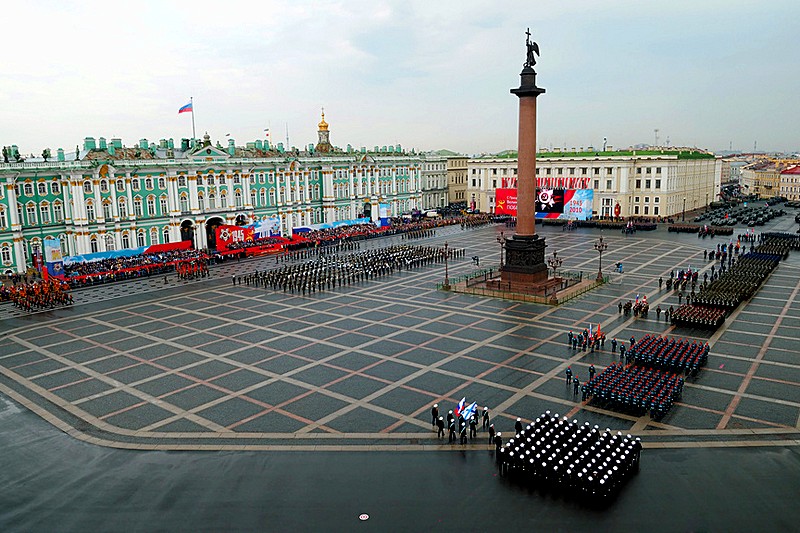
Since its inception, Palace Square has been the site of numerous parades and festivals, but it has also seen its share of bloodshed. On April 2nd, 1879, Alexander Soloviev unsuccessfully attempted to assassinate Tsar Alexander II by firing five shots from a revolver at the Emperor. On January 9th, 1905, Tsarist Imperial Guards opened fire upon unarmed protesters approaching the Winter Palace. Hundreds of demonstrators were killed and wounded, and the event became known as "the Bloody Sunday Massacre". And, of course, during the night of October 25th, 1917, Bolshevik troops stormed and sacked the Winter Palace, marking the end of Tsarist rule in Russia.
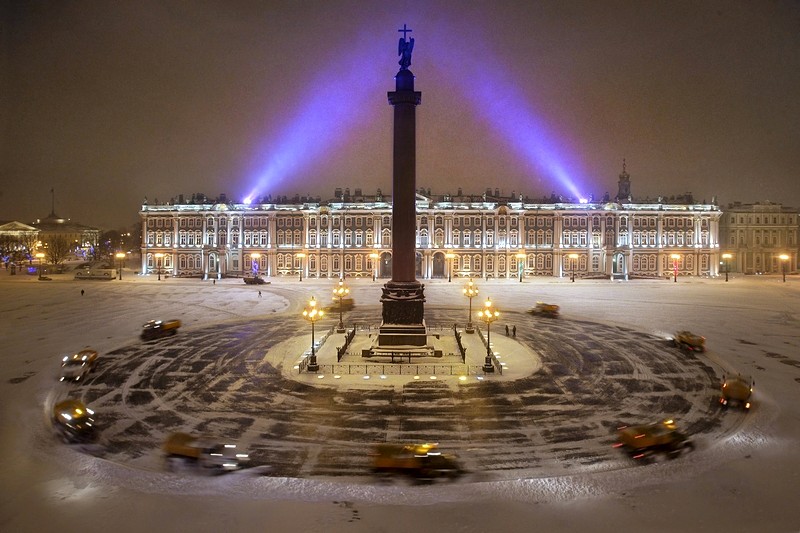
From 1923 to 1944, the square was renamed Uritsky Square, after Mosei Uritsky, Chairman of the Petrograd Cheka. In the summer of 1924, a gigantic chess board was constructed in the square for a unique "live" match. Sailors and Red Army soldiers represented the white and black chess pieces respectively, and the knights were even on horseback. The game's moves were directed via telephone. In 1977, a "grid" was formed from 460 small gray and pink granite tiles adorning the square. Today, many public events and concerts are held here throughout the year and Palace Square is a favorite spot for New Year's, Victory Day, Scarlet Sails, and White Nights celebrations.
| Metro stations: | Admiralteyskaya |
|---|---|
| Directions: | On exiting the metro station, turn right and then take the first left onto Bolshaya Morskaya Ulitsa. Follow the street across Nevsky Prospekt and on through the archway of the General Staff Building onto Palace Square. |
| What's here? | The Winter Palace / Hermitage Museum, General Staff Building, Guards Corps Headquarters, Alexander Column |
| What's nearby? | Moyka River, Bolshaya Morskaya Street, Nevsky Prospekt, Dvortsovaya Naberezhnaya (Palace Embankment), Admiralty |

